Alaska is not for the faint of heart. Nicknamed the Last Frontier, the state is unquestionably cold and remote, but it is also magnificent. As long as you have a view of the outdoors, you’ll never have to wonder what to do in Alaska, where nature reigns and demands to be admired. We’ve compiled a list of some of the best places to visit in Alaska, including both wonders of nature and resilient cities that have put down roots in this majestic landscape.
Related: 15 Best Airbnbs in Alaska
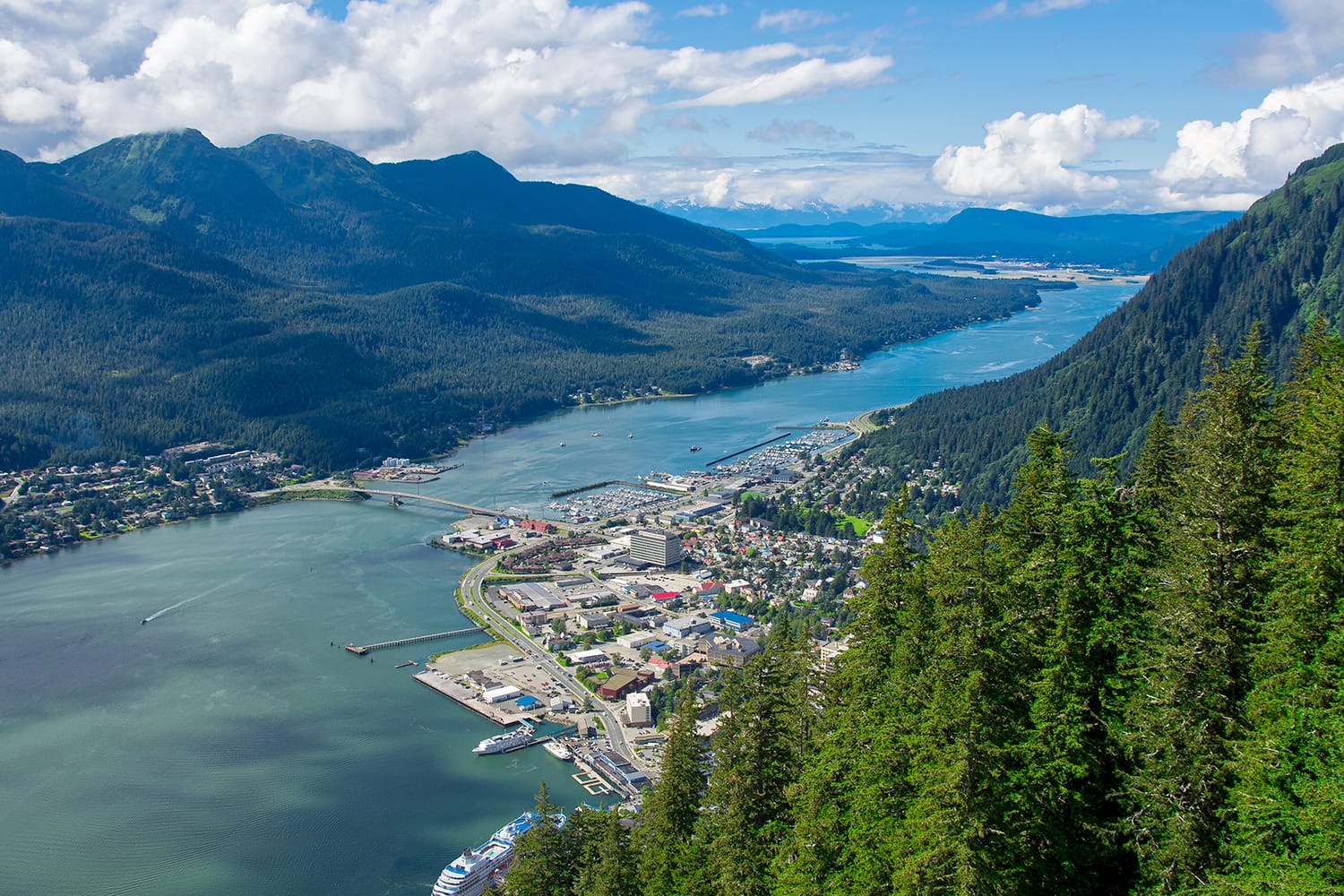
1. Juneau
The state’s capital could be said to represent a microcosm of all the fun things to do in Alaska. With the Gastineau Channel to the west and mountains and glaciers to the east, the city is a tapestry of breathtaking terrain and biodiversity. Make sure you factor plenty of photo time into your vacation plans because Juneau’s sparkling turquoise waters and lush, verdant forests will have you stopping frequently to capture the moment.
Mendenhall Glacier is a crowd favorite. About 13 miles northwest of downtown Juneau, the glacier can be enjoyed up-close via kayak excursions and hiking trails; a particularly popular trail leads to the spectacular Nugget Falls. For jaw-dropping views from a distance, many tourists head to the Mendenhall Glacier Visitor Center. Juneau is also a starting point to explore the Tongass National Forest. Glacier Gardens offers Rainforest Adventure Tours that take guests through their botanical gardens and up to a forest viewing area.
For some indoor activities, consider a stop by the Alaska State Museum, which features rotating exhibits about the natural and human history of the state. The museum also has an arboretum full of native plants. The Alaskan Brewing Company is based in Juneau, and their tasting room, with more than 20 Alaskan beers on tap, is a great way to unwind after a busy afternoon.
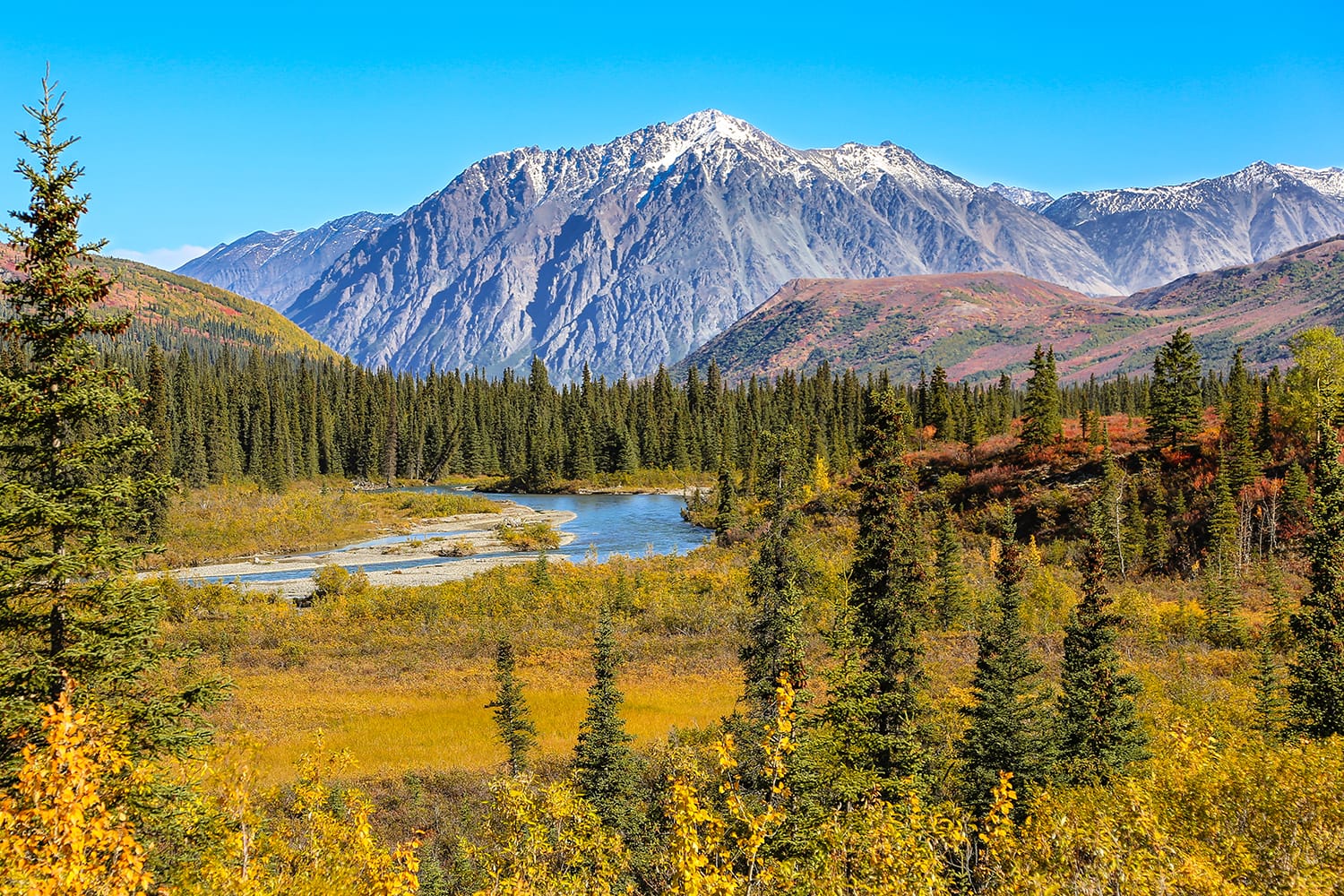
2. Denali National Park & Preserve
Located in Interior Alaska, Denali National Park & Preserve is a landscape of extremes. Home to Denali, the tallest peak in North America, this six-million-acre park is widely considered to be one of the most beautiful places in Alaska. A single road traverses this vast wilderness, but the park’s remote nature hasn’t deterred visitors; some 600,000 admirers come to wonder at its varied terrain and wildlife every year.
The best way to get around Denali National Park & Preserve is by jeep, especially if you’re interested in photographing the mountain or wildlife. The peak isn’t visible from everywhere in the park, but a guide can help you find its best angles, like the view from Reflection Pond, one of the most photographed spots in Denali. Drivers can also point out the best areas to view wildlife, which could include wolves, grizzly bears, moose, foxes, Dall sheep, or any of the preserve’s 169 species of birds.
You can book a jeep tour to Denali National Park & Preserve here!
Biking and hiking are some other popular ways to see the park, but be warned that in order to preserve the wilderness, Denali doesn’t have many marked trails.
For a striking and unique view of the park, consider a flightseeing tour. Some planes are even equipped with skis, allowing tourists the exciting experience of landing on top of a glacier.
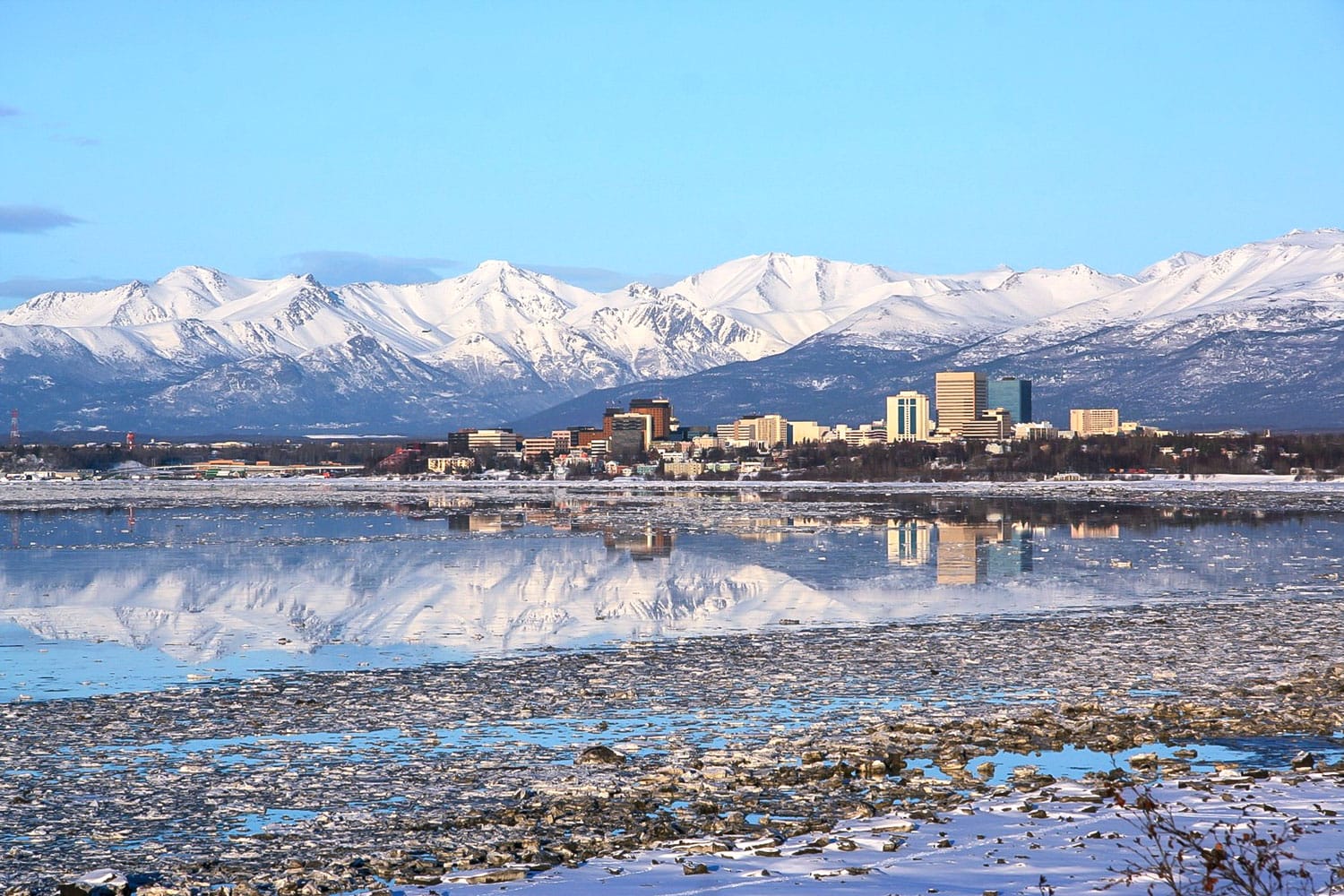
3. Anchorage
Although it’s technically a municipality, Anchorage is known to many people as the most populous city in Alaska. Anchorage has some 288,000 residents, which is almost 40 percent of the state’s entire population. The city’s relatively large population is reflected in its diversity of cultural offerings, restaurants, and nightlife. And because this is still Alaska, you won’t have to look far to find outdoor pursuits.
The Alaska Native Heritage Center is a must-see for anyone who wishes to learn about Alaska Native traditions and culture. Lifesize village sites, permanent collections, and immersive programs celebrate all of Alaska’s Native peoples. For even more Alaskan insight, check out the Anchorage Museum, where exhibitions combine art, history, and technology to tell the story of this northern land and the people who call it home.
Anchorage’s location on the south-central coast makes it a gateway to many of Alaska’s most popular state and national parks. However, you don’t have to leave the city to appreciate nature. Among Anchorage’s many trails is the beloved 11-mile Tony Knowles Coastal Trail, which winds its way along the Turnagain Arm and through forests before ending at Kincaid Park, one of the largest in the city and home to wildlife like wandering moose.
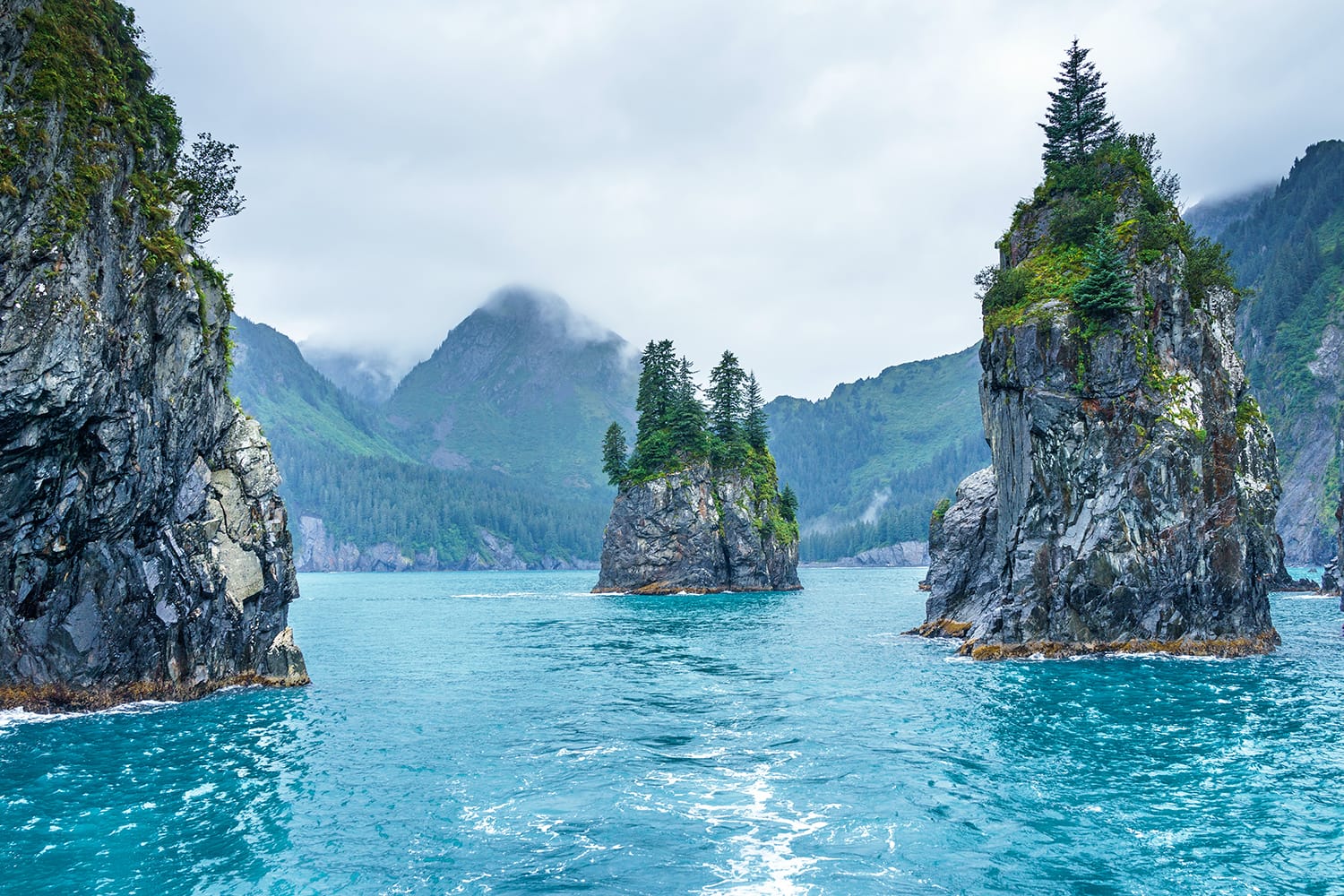
4. Kenai Fjords National Park
Land meets sea at Kenai Fjords National Park, situated at the edge of the Kenai Peninsula on the Gulf of Alaska. The park is best known for the Harding Icefield, from which nearly 40 glaciers flow over and sculpt the adjacent land. There are several ways to explore the icy expanse, but keep in mind that most of this wild terrain isn’t suitable for beginners.
The national park encompasses 600,000 acres, and the majority of those acres constitute untouched backcountry. Seasoned adventurers can elect to set up camp along the coast, but landing sites are only accessible via kayak or water taxi. Guides are recommended for novice paddlers. Boat tours departing from nearby Seward provide a stress-free way to experience the fjords.
You can book a boat cruise through the Kenai Fjords National Park here!
Kenai Fjords National Park is one of the most exciting places to go in Alaska for intrepid hikers, thanks to the Harding Icefield Trail. The 8.2-mile round-trip hike begins in the Exit Glacier Area, the only section of the park that is accessible by road. The trail climbs from a valley through meadows and forests before it breaches the tree line and surfaces to views of the Harding Icefield. This magnificent vista of snow and ice dotted with nunataks, hills or mountains surrounded by glacial ice, is a fitting reward for those who tackle the strenuous hike.
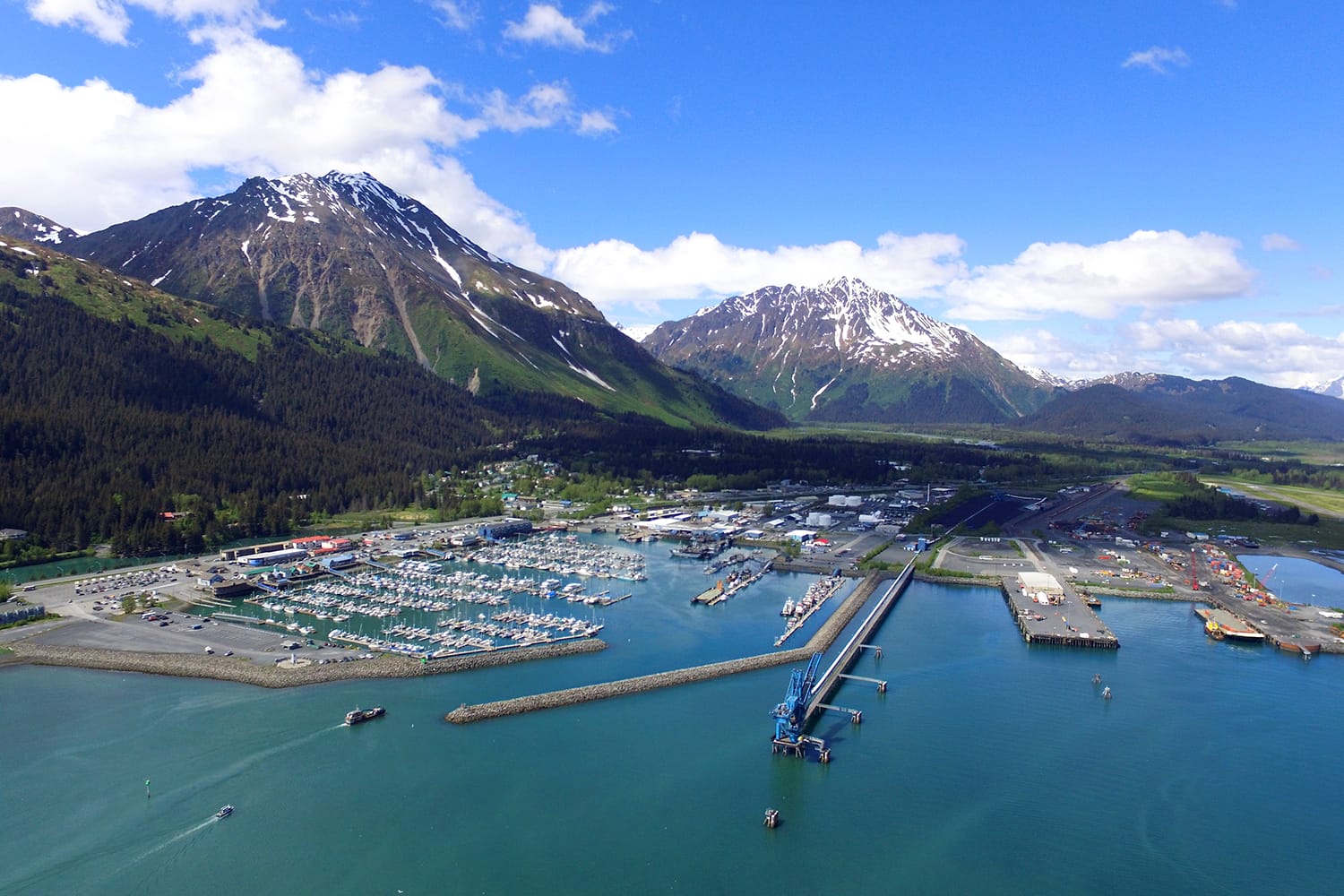
5. Seward
A port city in southern Alaska, Seward is often considered a gateway. Kenai Fjords National Park sits directly to the west, so Seward is a convenient base for park visitors. The primary reason why Seward is a popular tourist attraction in Alaska is that the city serves as an embarkation and disembarkation point for many Alaskan cruises. But Seward is a destination in its own right, and there’s enough to do here to fill a proper visit.
A port city means marine life, and Seward presents several ways to appreciate it. Families favor the Alaska SeaLife Center, which is both an aquarium and the sole permanent marine mammal rescue and rehabilitation center in the state. Various companies offer wildlife boat tours to help guests spy whales, porpoises, otters, and sea lions. Seward also has numerous fishing charters, so anglers can try their luck at catching halibut, black bass, ling cod, salmon, and more.
Like just about any destination in Alaska, Seward is best enjoyed outdoors. Seward’s Waterfront Park has lovely harbor views as well as picnic areas, beaches, and campsites. A number of well-maintained trails in Seward attract hikers of all skill levels. For a challenge, try the Mount Marathon trail, which takes you up the mountain with views of forests and a glacial valley.
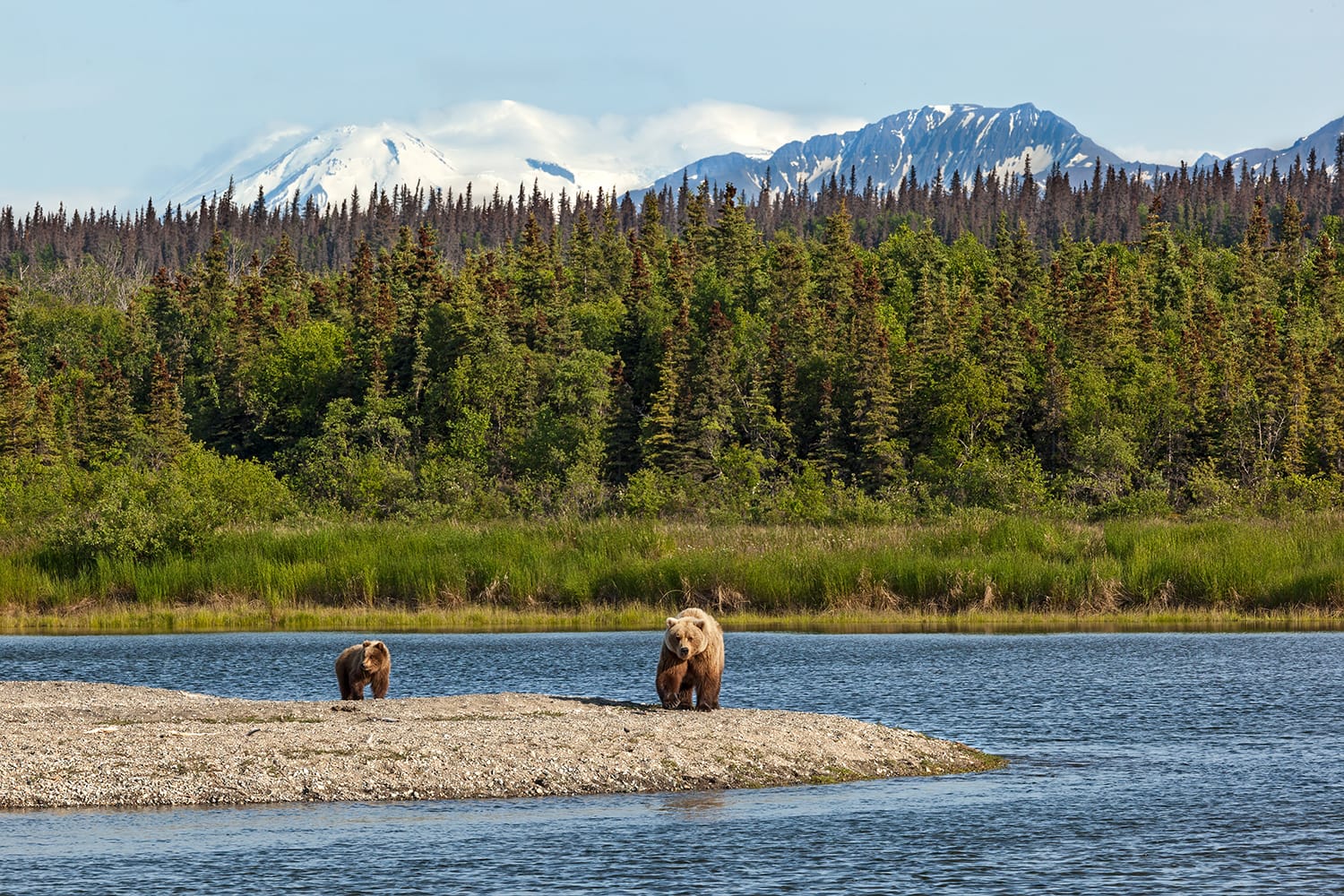
6. Katmai National Park & Preserve
In 1912, a lava dome dubbed Novarupta was formed on the Alaska Peninsula during the largest volcanic eruption of the 20th century. Pyroclastic flows during the eruption resulted in a landscape that botanist Robert F. Griggs would call the Valley of Ten Thousand Smokes. Katmai National Park & Preserve began as a national monument, designated in 1918 to protect the Valley of Ten Thousand Smokes. The protected territory expanded to its current size in 1980, and today the park is primarily known for two things: volcanoes and bears.
Katmai National Park & Preserve mostly comprises wilderness, so there are very few marked trails. However, experienced backcountry hikers and campers have seemingly endless exploration opportunities to choose from. These options include the Pacific coast, various creeks, the massive Naknek Lake, and of course, the Valley of Ten Thousand Smokes.
Brooks Camp is by far the most popular destination in Katmai National Park & Preserve, and one of the best places to visit in Alaska to see bears. Tourists come from far and wide to this spot at the mouth of Brooks River in order to witness brown bears hunt and feast on sockeye salmon. Late summer through early fall is the best time to see bears on the river.
Related: 25 Best National Parks in the US
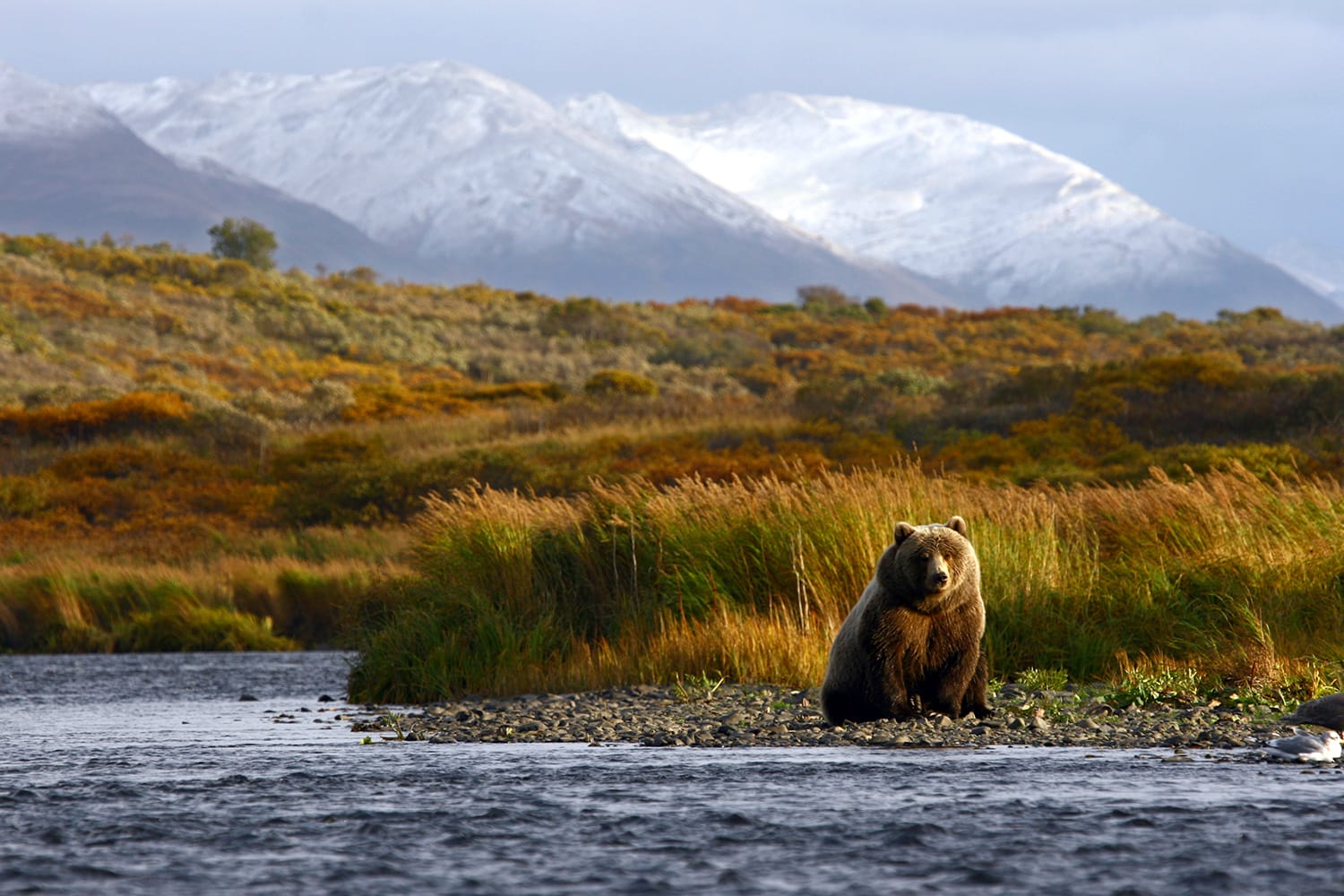
7. Kodiak Island
Just off the southern coast of the state is the largest island in Alaska and the second-largest island in the US. Kodiak bears are native to this island, and to many visitors the island itself has become synonymous with bears. Unsurprisingly, one of the most popular tourist spots here is the Kodiak National Wildlife Refuge, but the island also offers a range of cultural activities.
President Franklin D. Roosevelt established the Kodiak National Wildlife Refuge in 1941 in order to preserve the habitat of Kodiak bears, which are genetically distinct from other brown bears. The refuge’s 1.9 million acres cover two-thirds of Kodiak Island in addition to land on other isles in the archipelago. Wildlife photographers are welcome at the refuge, but bear viewing requires careful planning. Your best chance for viewing bears is via a flightseeing trip or a multiday stay at a remote lodge or campsite.
Visitors interested in the history of the island won’t be disappointed by its variety of offerings. The Fort Abercrombie State Historical Park harbors the ruins of a coastal World War II defense installation. The Alutiiq Museum & Archaeological Repository’s exhibits share the culture and heritage of coastal Alaska’s Native peoples. Adventurous beachcombers can venture to Fossil Beach at low tide for a chance to collect some fossils.
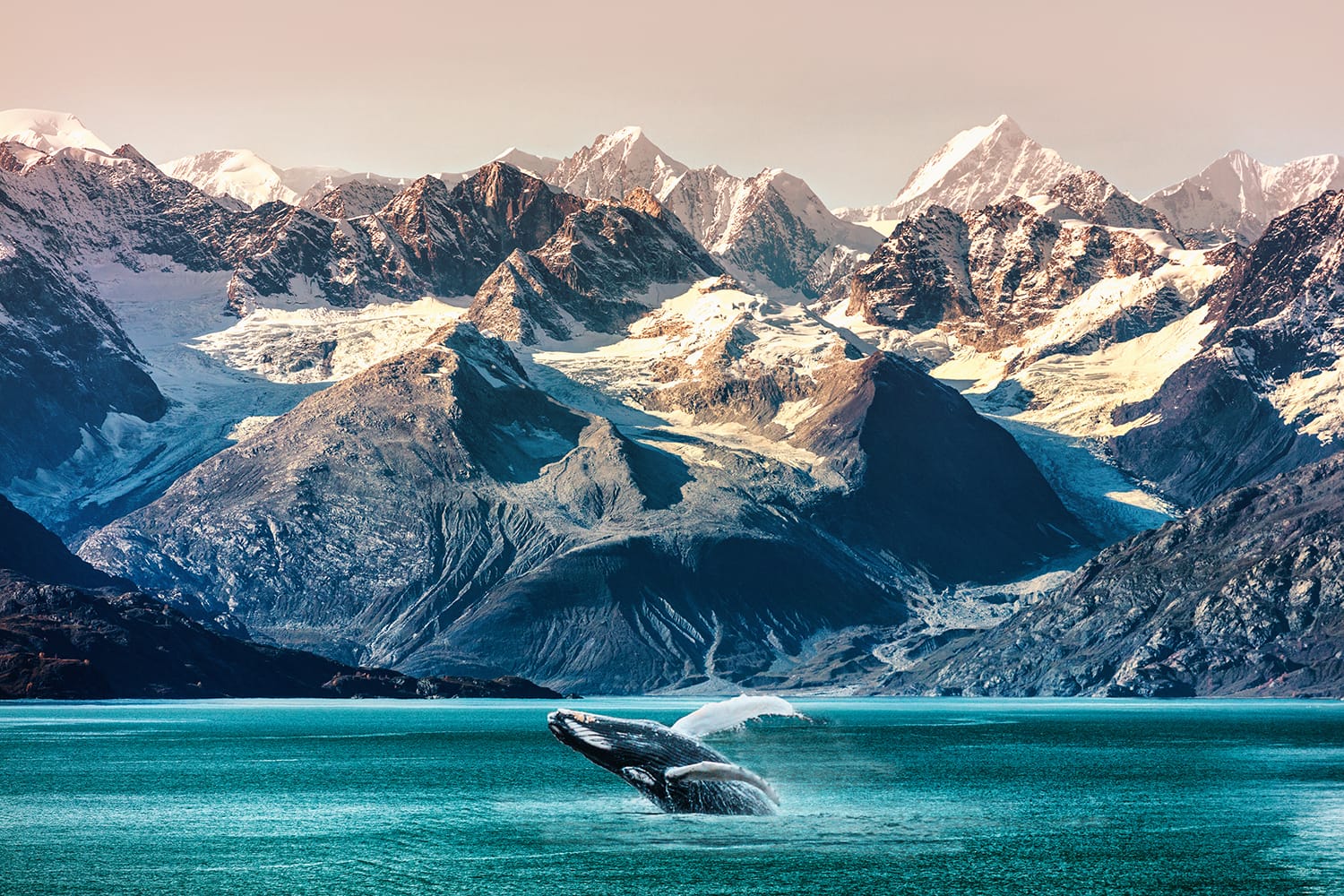
8. Glacier Bay National Park & Preserve
The preservation of Glacier Bay began with its designation as a national monument under the Antiquities Act in 1925. Subsequent expansions resulted in a national park and preserve that spans 3.3 million acres and, together with two Canadian parks and Alaska’s Wrangell–St. Elias National Park & Preserve, comprises the first binational UNESCO World Heritage Site.
This southeast wilderness preserve features quintessential Alaska attractions: glaciers, mountains, wildlife, and an ancestral homeland for Native peoples. Since a good deal of the park consists of water (frozen or otherwise), it follows that many visitors explore Glacier Bay by boat. In fact, the majority of the park’s visitors are cruise ship passengers who welcome guides aboard rather than go ashore themselves. Charter boats and tour vessels provide a similar experience on a smaller scale.
Glacier Bay prioritizes keeping the wilderness wild, so roads and trails are few and far between. Adventurers are welcome to explore the wilderness, provided that they are self-sufficient and prepared for anything. Sea kayaking is the most popular activity for independent travelers, in part because it is less strenuous than backpacking the mountainous terrain. Experienced thrill-seekers, however, are welcome to tackle backpacking, river rafting, and even mountaineering.
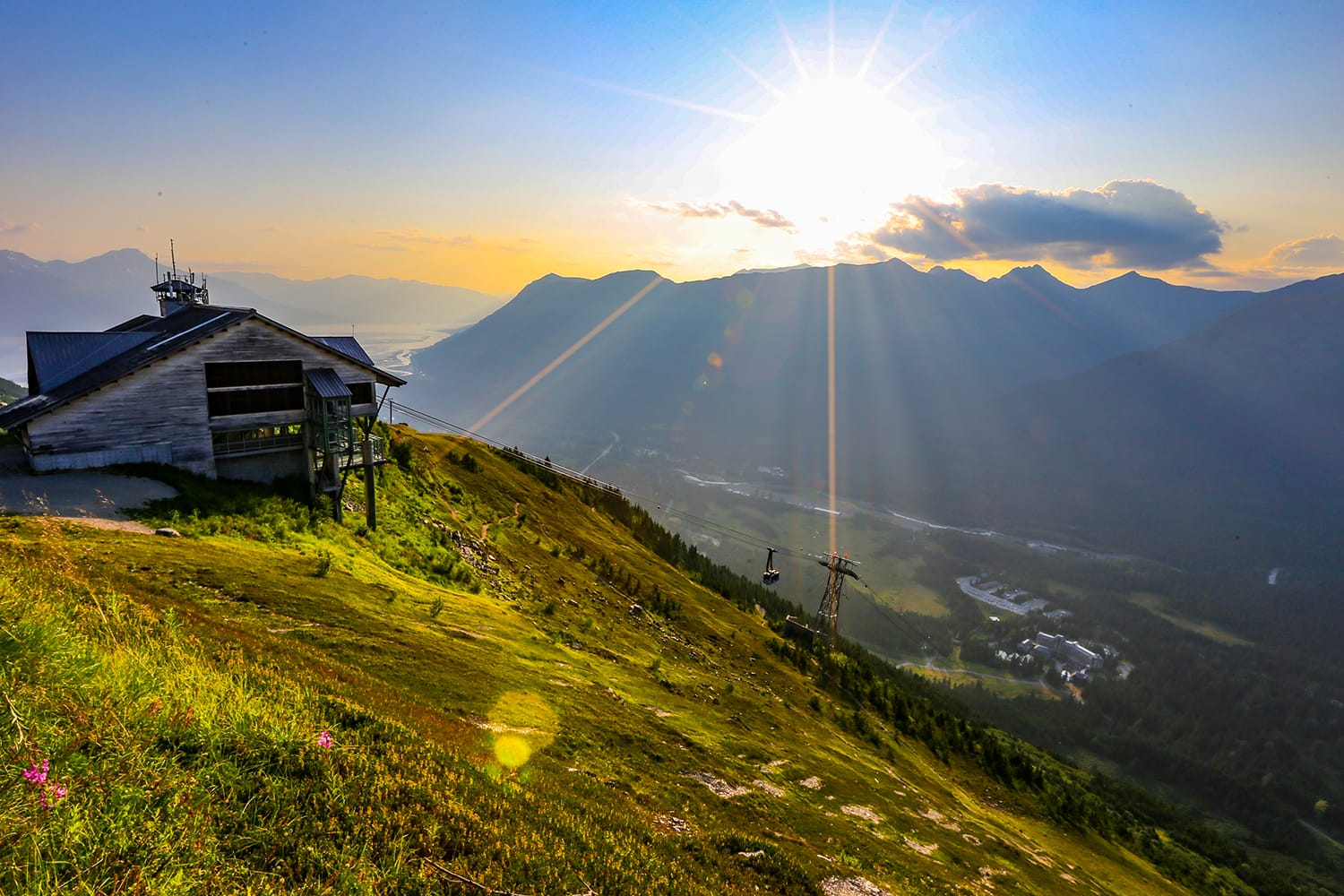
9. Girdwood
Just 40 miles southeast of downtown Anchorage is one of the best vacation spots in Alaska for travelers looking to relax in a spectacular setting. Technically part of the municipality of Anchorage, Girdwood is a resort town with roots as a supply community for miners during the Turnagain Arm gold rushes in the 1890s. It’s no mystery why Girdwood was originally named Glacier City – the town lies in a valley surrounded by stunning glaciated peaks.
Girdwood’s biggest draw is the Alyeska Resort, the only destination ski resort in Alaska. Skiers and snowboarders are in luck at this resort, which boasts 1,610 skiable acres and more than 55 feet of snow a year. The slopes here have a reputation for being steep and deep; the most notable is probably the Christmas Chute, one of the longest double black diamond runs in the world.
The warmer months offer their own brand of fun in Girdwood. The town is situated in the northernmost temperate coastal rainforest in North America, and its hiking trails put the lush greenery on vivid display. A fan favorite is the Winner Creek Trail, which takes hikers on a gentle but beautiful three-mile journey. To see Girdwood at its liveliest, schedule your trip around the Forest Fair, a celebration of Alaskan arts and music during the first weekend of July.
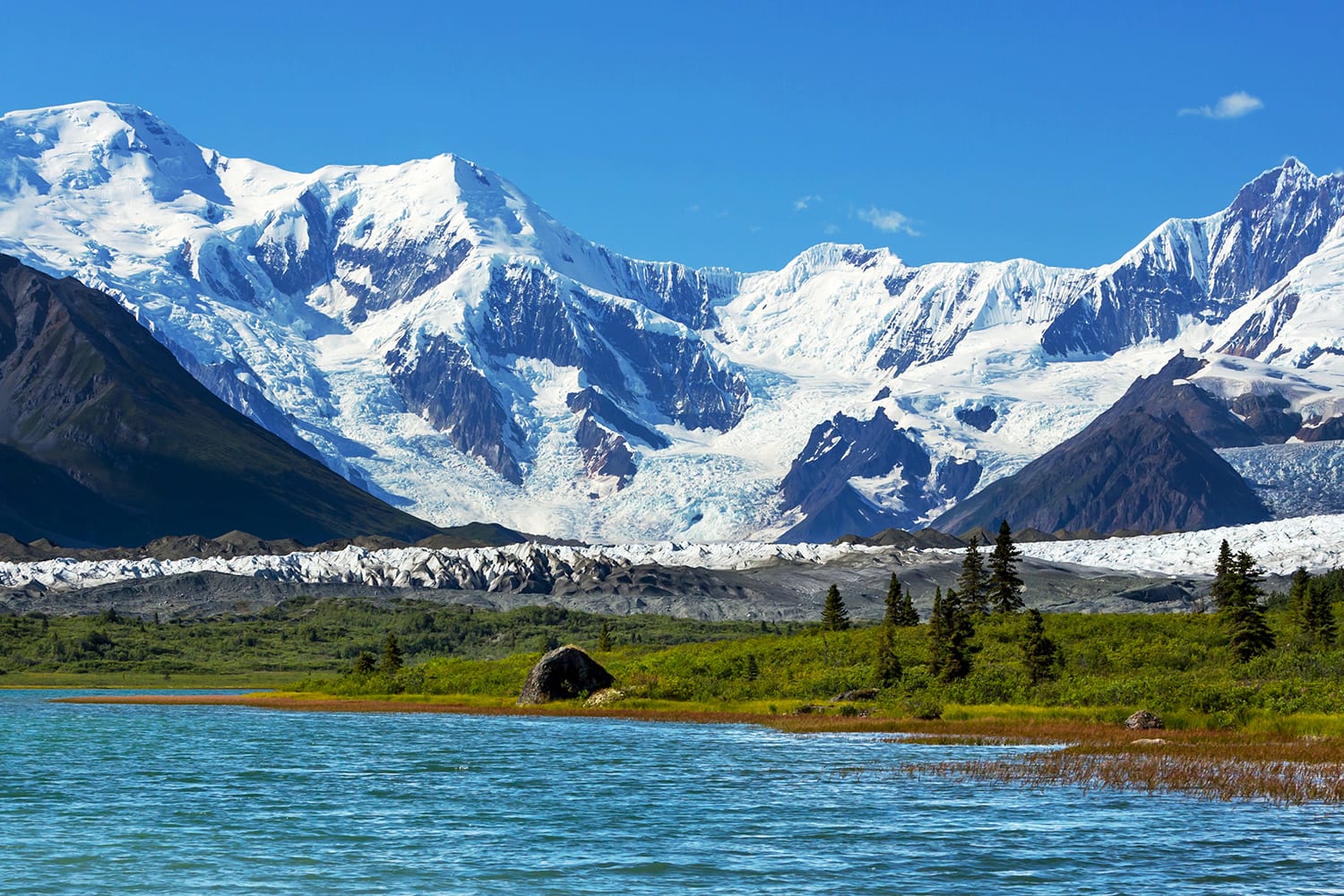
10. Wrangell–St. Elias National Park & Preserve
At 13.2 million acres, Wrangell–St. Elias National Park & Preserve is unquestionably the largest area managed by America’s National Park Service. It should come as no surprise that Wrangell–St. Elias has activities to appeal to just about anyone. The park is open year-round, so hardy visitors can tackle cross-country skiing, snowshoeing, or snowmobile rides in bitterly cold months when even the visitor centers and ranger stations are closed.
Like most pieces of protected land in Alaska, Wrangell–St. Elias National Park & Preserve largely comprises unspoiled backcountry, and it’s up to both the park employees and the visitors to make sure it stays that way. Experienced outdoor explorers can navigate challenging whitewater rivers, climb towering glaciated peaks, and camp among rugged landscapes.
Not an outdoor expedition expert? Have no fear. A handful of maintained trails and routes make for very satisfying day hikes with views of mountains, glaciers, and rainforest. Guests are also encouraged to take advantage of ranger-led programs, which include guided walks and interpretive talks. A large number of guides and outfitters are available in the area, so whether you want to fly into the park, scale a mountain, float on a river, or commune with the wilderness, you can do so with an expert by your side.
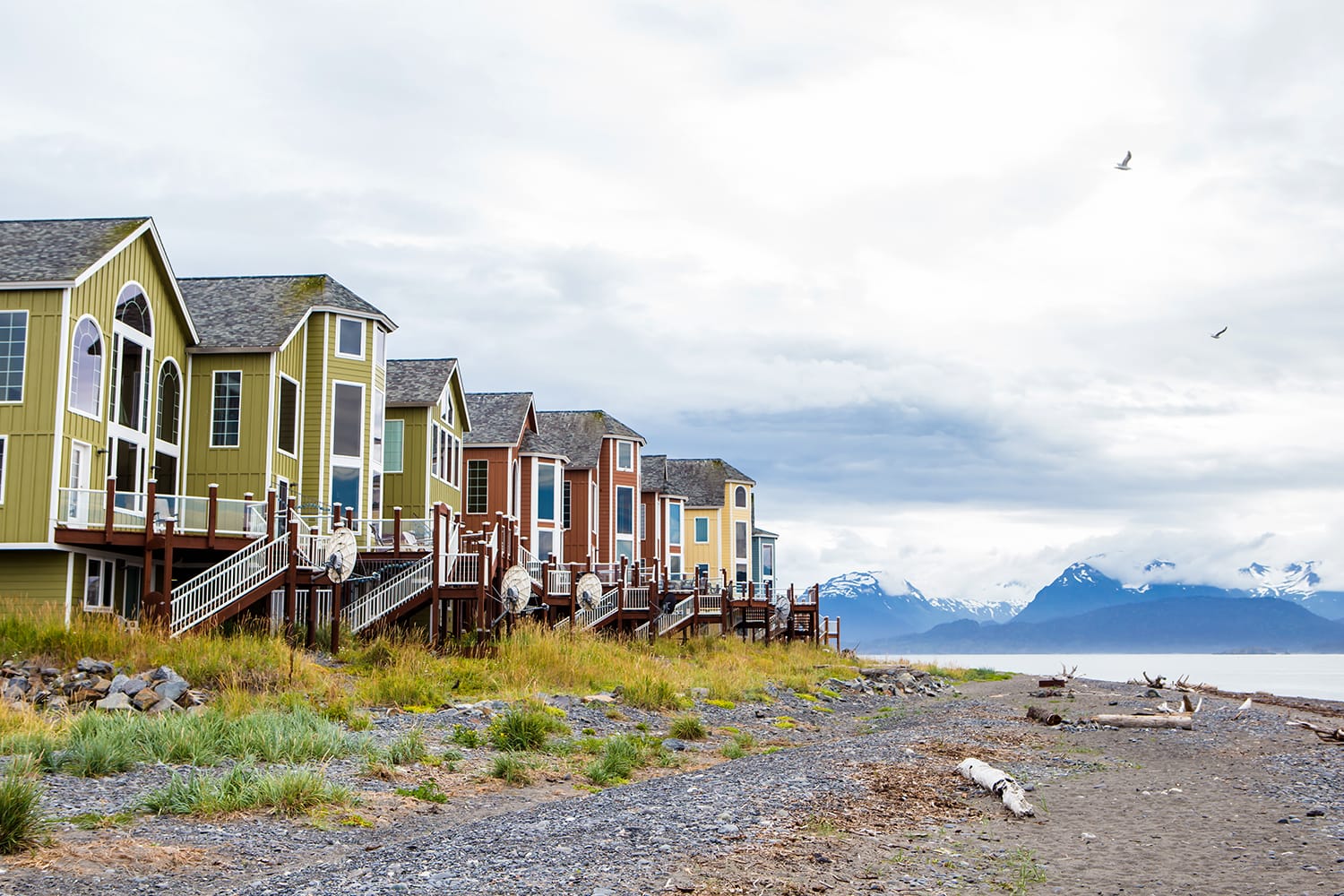
11. Homer
A small town on the Kenai Peninsula, Homer is just across the bay from Kachemak Bay State Park. The town was named after Homer Pennock, a gold prospector, but ironically gold mining was never successful here. Homer’s predominant industry was coal mining from the 1890s through World War II, but today the economy largely revolves around fishing and tourism.
The town’s main feature is the Homer Spit, a narrow strip of land that extends 4.5 miles into Kachemak Bay. The strip is lined with businesses, restaurants, hotels, and campsites, making it a major tourist attraction. Summer is a popular time on the Spit, when hundreds of boats dock in the harbor and anglers and seals alike flock to the Nick Dudiak Fishing Lagoon (locally known as The Fishing Hole) to snag some salmon and halibut.
Homer also has its fair share of educational institutions, galleries, and breweries to visit if you can bear to tear yourself away from the bustle. Standouts include the Center for Alaskan Coastal Studies, which offers tours, programs, and guided walks exploring the bay’s marine and coastal ecosystems; the Norman Lowell Gallery, with striking paintings depicting Alaska’s natural scenery; and the Homer Brewing Company, established in 1996 and specializing in traditional country ales.
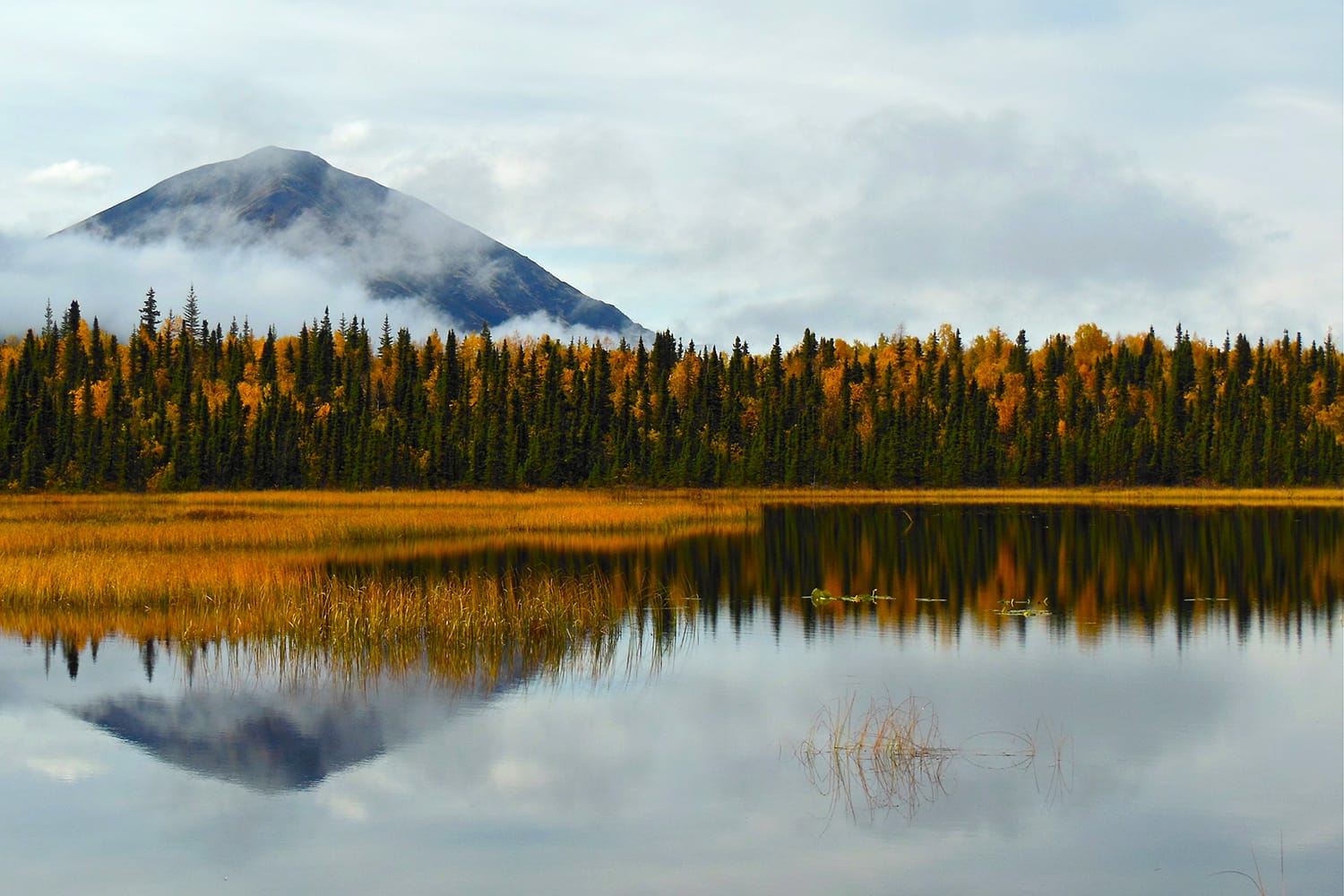
12. Lake Clark National Park & Preserve
Lake Clark National Park & Preserve is situated in southwest Alaska, with Denali National Park & Preserve to the north and Katmai National Park & Preserve to the south. So how does this land distinguish itself, and what draws visitors here in particular? The answer is water. No matter the season, visitors can engage in a variety of aquatic activities at this park and preserve.
Lake Clark National Park & Preserve is a must-see in Alaska for serious anglers. Part of the motivation behind the land’s designation as a preserve was to protect the waters that fueled important fisheries. Multiple lakes, creeks, and rivers teem with sockeye salmon, Chinook salmon, Arctic char, Arctic grayling, lake trout, and more. Kayaking, canoeing, and river rafting are popular pastimes. In the winter, visitors can be seen ice fishing and even riding fat tire bikes across frozen lakes.
In Alaska, an abundance of fish means an abundance of bears, so anglers in certain creeks and rivers should be wary. Lake Clark National Park & Preserve has plentiful bear-viewing opportunities between June and September. Bird-watching is big here, too, thanks to 187 species of raptors, shorebirds, seabirds, waterfowl, and songbirds. Sport hunting is permitted on the preserve portion of the property.
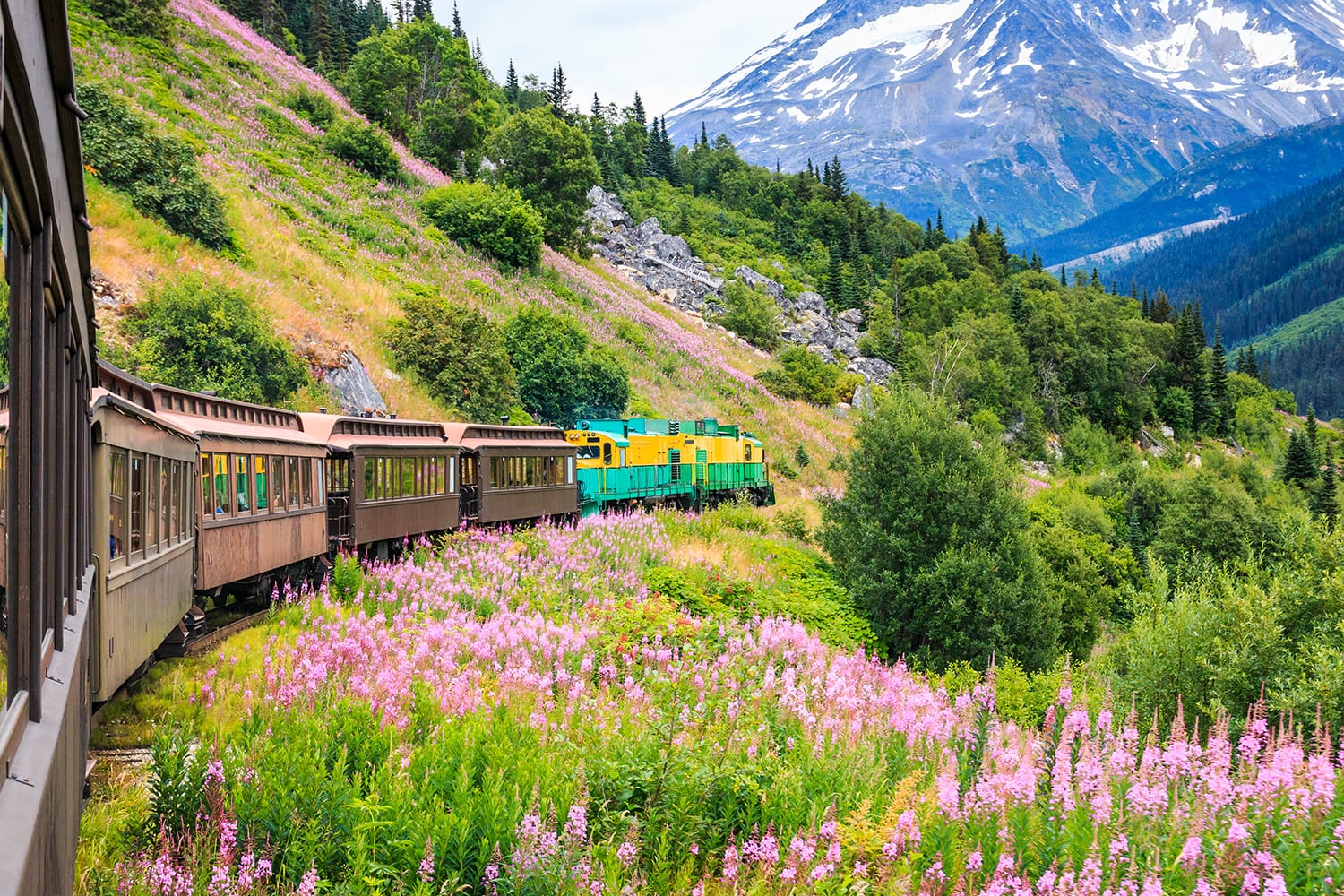
13. Skagway
Located on the Alaskan Panhandle, the municipality of Skagway has a population that hovers around 1,000, and yet the compact community receives more than one million visitors each year. The reason? Skagway is a popular cruise ship stop along the Inside Passage. In fact, Skagway’s population doubles during the summer months in order to accommodate the tourist season.
A big part of what makes Skagway one of the top attractions in Alaska is the community’s historic charm. Downtown Skagway has six blocks designated as a National Historic District. Klondike Gold Rush National Historical Park manages more than 20 buildings in and around the district in order to preserve the legacy of the 1890s stampeders. Notable buildings include the Mascot Saloon, Corrington’s Alaskan Ivory Museum & Gift Shop, and the Arctic Brotherhood Hall.
Skagway has a number of scenic day hikes. One of the most popular is the Gold Rush Cemetery and Lower Reid Falls hike, which offers a spectacular view of the waterfall. Yakutania Point is another photo-worthy hiking destination thanks to its sprawling views of rugged shoreline and the sparkling waters of the Skagway River and the Taiya Inlet. This hike connects to Smuggler’s Cove, a grassy tidal inlet at the end of a trail through lush coastal forest.
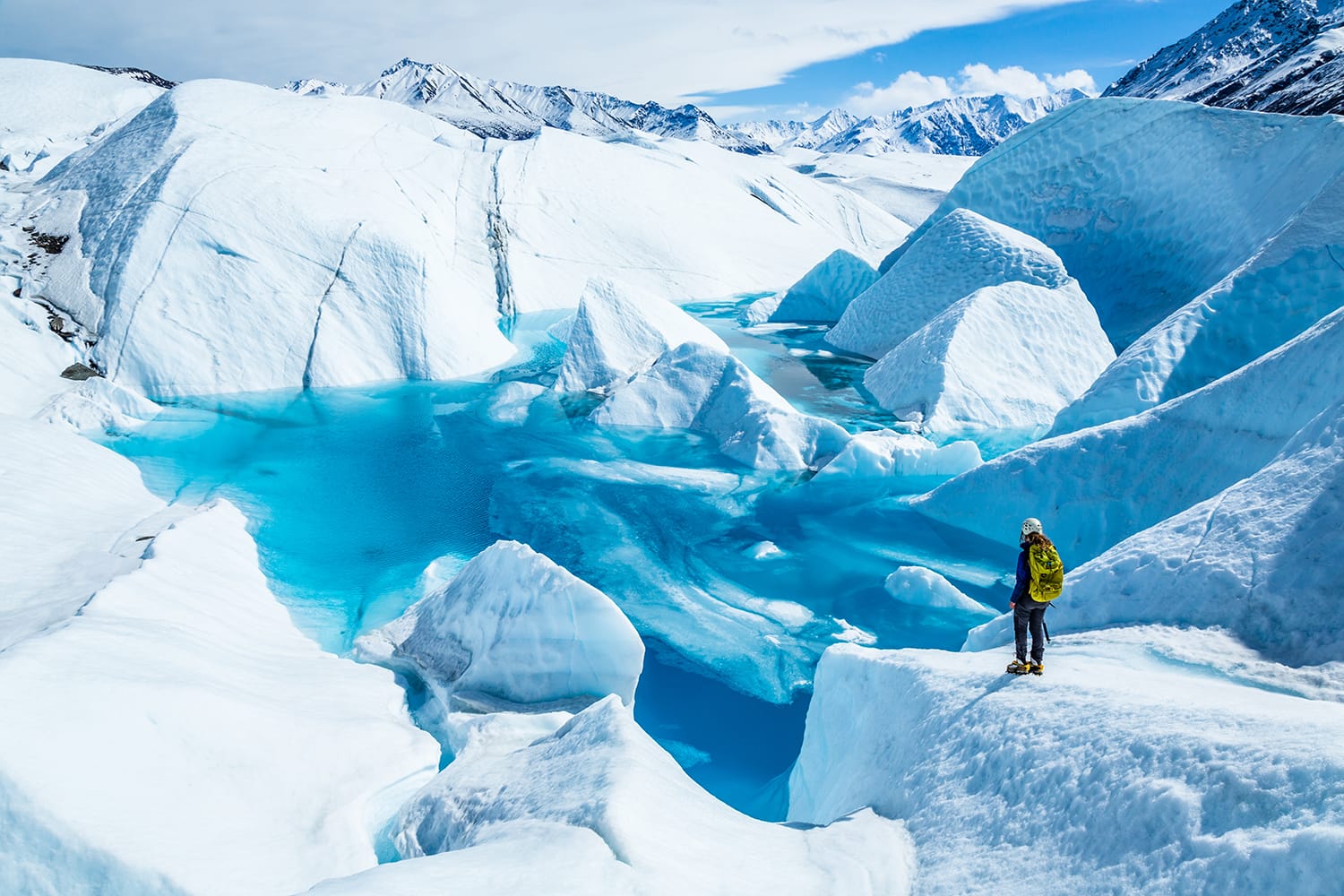
14. Matanuska Glacier
Many of Alaska’s natural wonders are located in remote areas or places where the terrain is hazardous for humans. As a result, a good deal of the state is accessible only by air or by boat. If you’re touring Alaska in a car, your options are limited. Thankfully, there are sites like the Matanuska Glacier. Not only is this scenic glacier accessible by car, it is the largest glacier accessible by car in the United States.
The Matanuska Glacier is about 100 miles northeast of Anchorage, so it makes for a great day-trip activity if you’re based in Alaska’s most populous city. The lone road that leads to the glacier allows visitors to get an up-close view and even to walk on the ice. Guided tours are recommended for inexperienced glacier hikers (especially if you need to borrow some crampons), but experts might want to look into guided hikes, too, since a variety of difficulty levels are available.
If you’d rather admire the glacier from afar, consider a sojourn to the nearby Matanuska Glacier State Recreation Site. The site has no glacier access, but it does offer several spectacular viewpoints. A nature trail, picnic tables, firepits, 12 campsites, and a nearby lodge entice visitors to extend their stay.
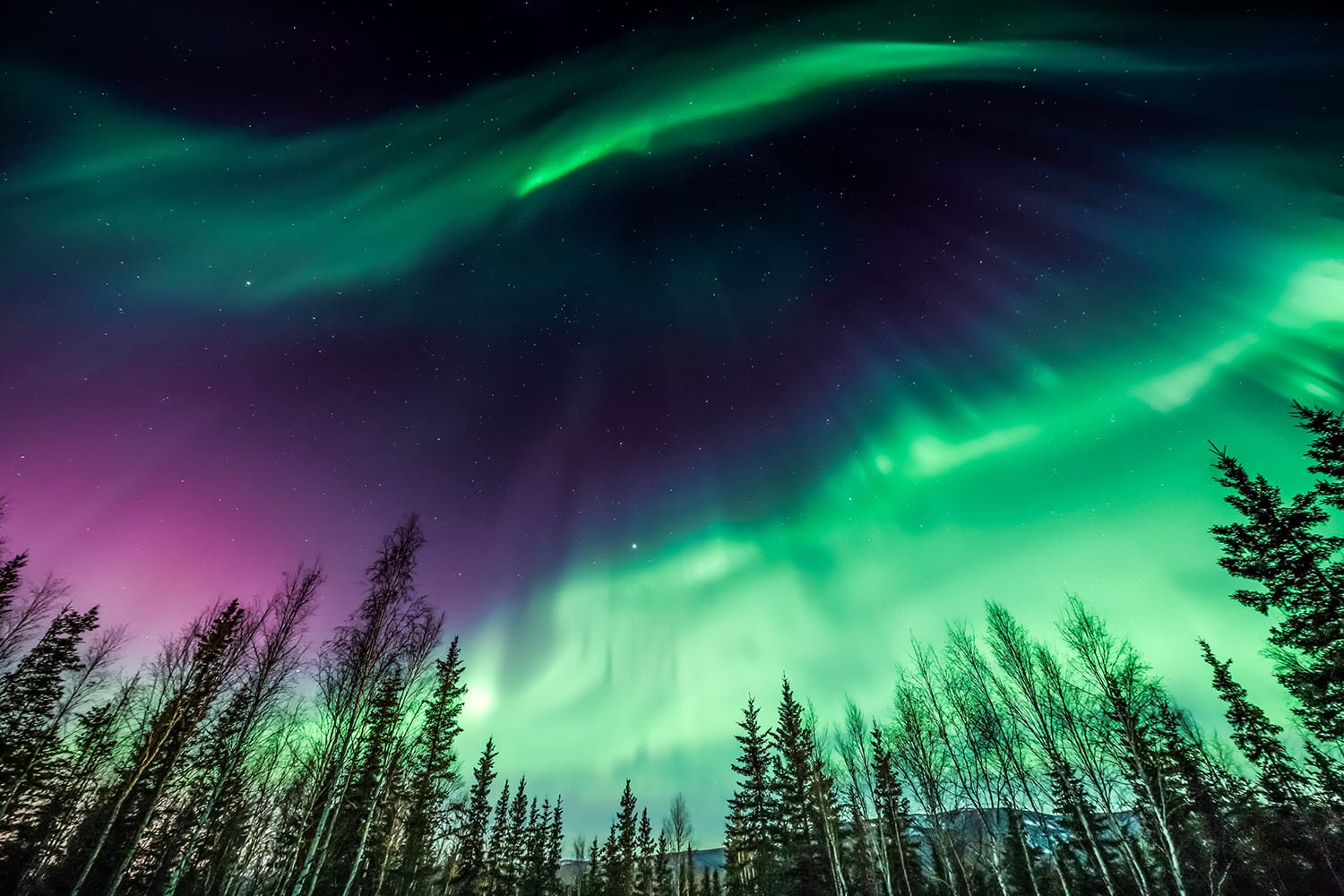
15. Fairbanks
The great majority of tourist destinations in Alaska are coastal, hugging the Gulf of Alaska. Fairbanks is a notable exception. Located roughly 350 miles north of Anchorage, it is the largest city in Alaska’s Interior region. Like many cities in Alaska, Fairbanks lured European settlers who were searching for gold. Today, the city draws visitors with an eclectic variety of attractions.
Sites that address Fairbanks’s history often rate highly among tourists. The Fountainhead Antique Auto Museum, for example, caters to fans of both vehicles and fashion, thanks to its extensive collection of classic cars and antique garments. Pioneer Park’s combination of education and fun make it a family favorite. The park encompasses a historic village, museums, and a gold rush town street in addition to a carousel, restaurants, and shops.
Fairbanks’ northerly location is the source of several of its most popular events and activities. The city is situated under the Aurora Oval, which means that between August 21 and April 21, the night skies may display the colorful phenomenon known as the northern lights. In summer months, the weather is warmer and the days are longer in Fairbanks than they are in southern Alaska destinations. Events like the Midnight Sun Festival, a 12-hour street fair, celebrate the solstice.
Alaska may feel far removed from the rest of the United States, but its history and unique natural landscape are definitely worth the journey. You’ll never run out of things to see in Alaska, the largest – and possibly the most magnificent – state in the country.
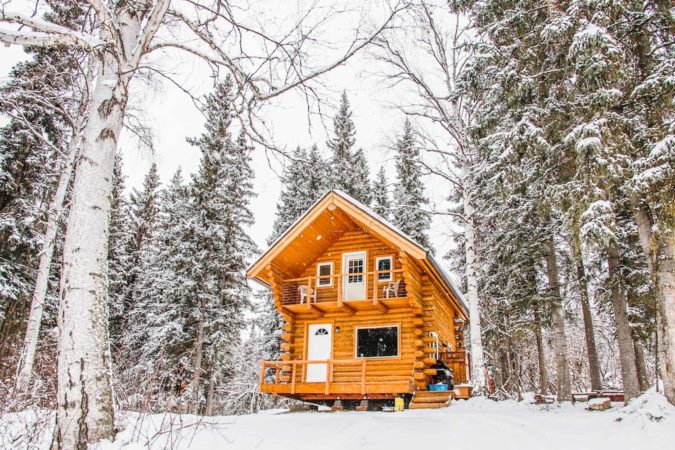
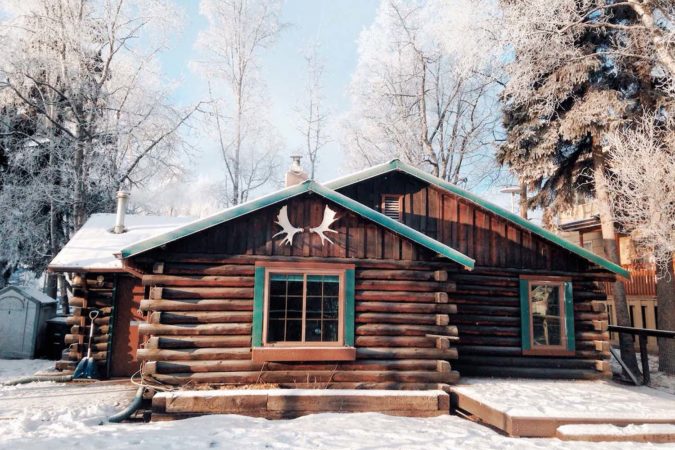
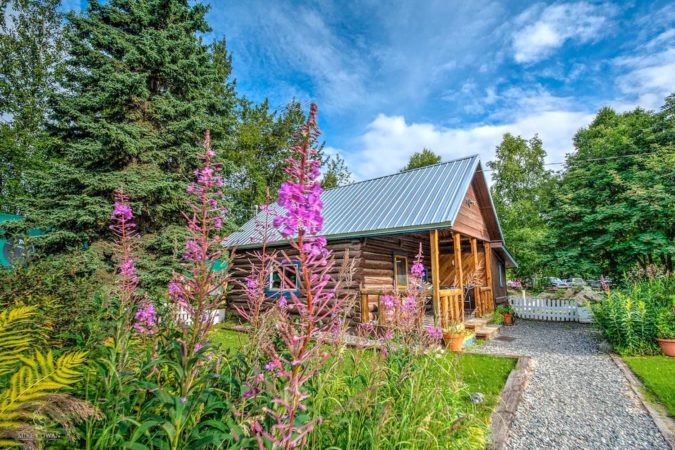
Comments